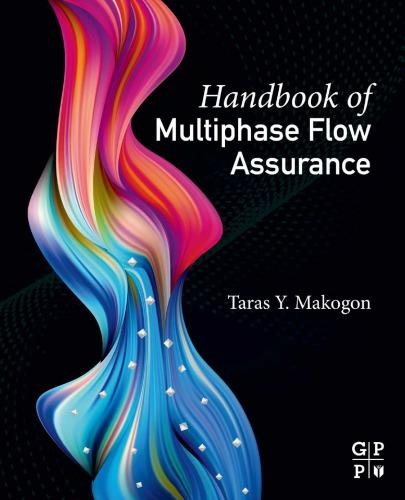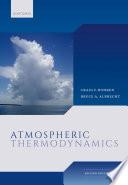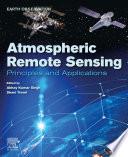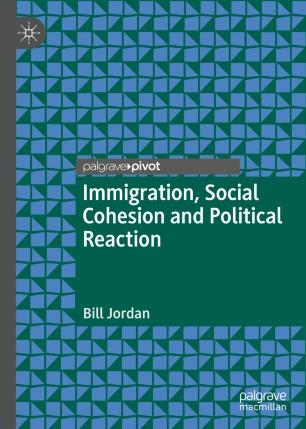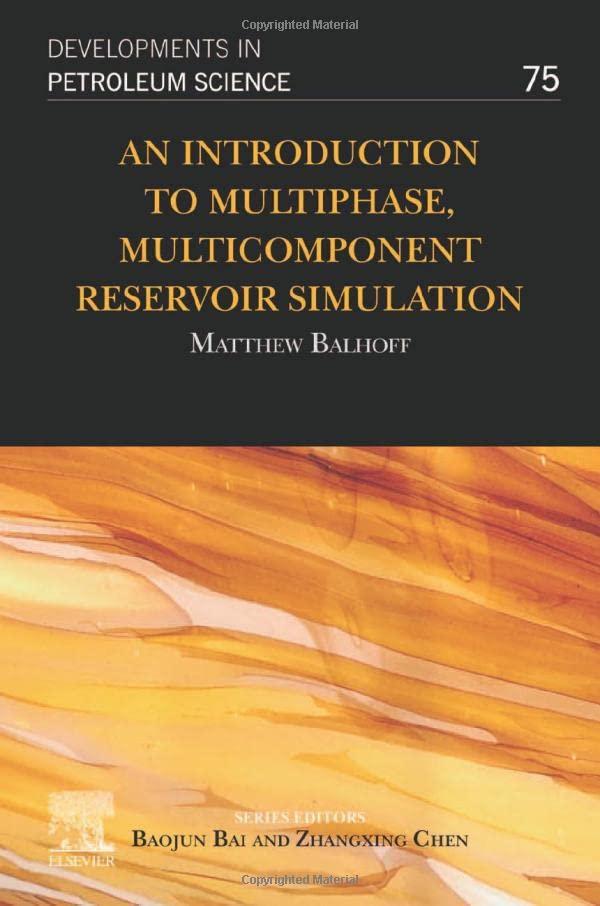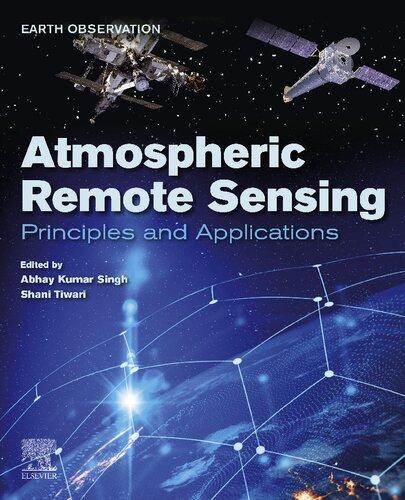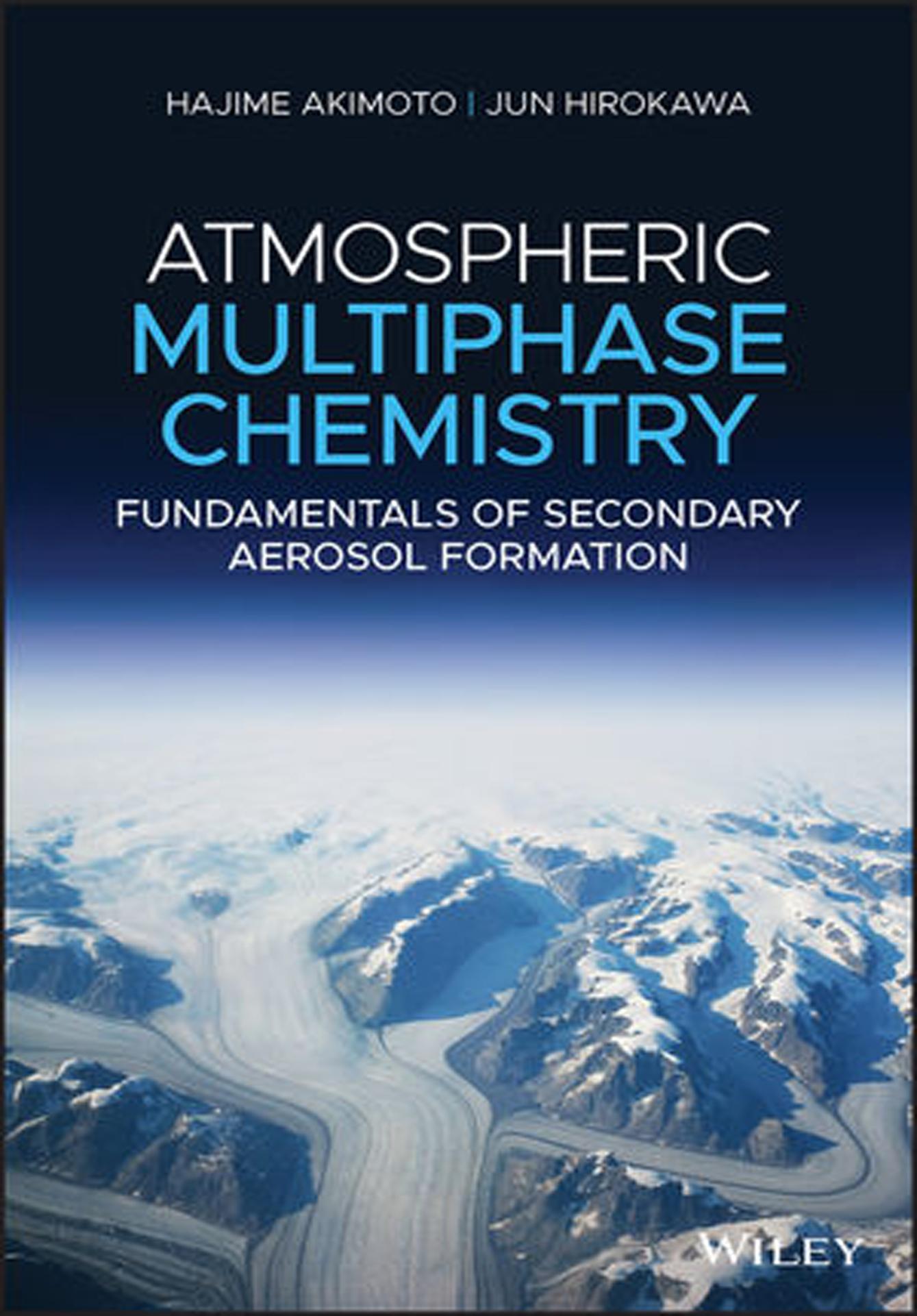Atmospheric Multiphase Reaction Chemistry 1st Edition Hajime Akimoto Visit to download the full and correct content document: https://ebookmass.com/product/atmospheric-multiphase-reaction-chemistry-1st-editio n-hajime-akimoto/
More products digital (pdf, epub, mobi) instant download maybe you interests ...
Handbook Of Multiphase Flow Assurance 1st Edition Taras Makogon
https://ebookmass.com/product/handbook-of-multiphase-flowassurance-1st-edition-taras-makogon/
Atmospheric Thermodynamics, 2nd Edition Craig Bohren https://ebookmass.com/product/atmospheric-thermodynamics-2ndedition-craig-bohren/
Multiphase Fluid Flow in Porous and Fractured Reservoirs 1st Edition Wu https://ebookmass.com/product/multiphase-fluid-flow-in-porousand-fractured-reservoirs-1st-edition-wu/
Atmospheric Remote Sensing Abhay Kumar Singh
https://ebookmass.com/product/atmospheric-remote-sensing-abhaykumar-singh/
Immigration, Social Cohesion and Political Reaction 1st ed. Edition Bill Jordan
https://ebookmass.com/product/immigration-social-cohesion-andpolitical-reaction-1st-ed-edition-bill-jordan/
Oxygen Reduction Reaction : Fundamentals, Materials, and Applications Kushal Sengupta
https://ebookmass.com/product/oxygen-reduction-reactionfundamentals-materials-and-applications-kushal-sengupta/
Statistical Methods in the Atmospheric Sciences 4th Edition Daniel S. Wilks
https://ebookmass.com/product/statistical-methods-in-theatmospheric-sciences-4th-edition-daniel-s-wilks/
An Introduction to Multiphase, Multicomponent Reservoir Simulation Matthew Balhoff
https://ebookmass.com/product/an-introduction-to-multiphasemulticomponent-reservoir-simulation-matthew-balhoff/
Atmospheric Remote Sensing: Principles and Applications
Abhay Kumar Singh
https://ebookmass.com/product/atmospheric-remote-sensingprinciples-and-applications-abhay-kumar-singh/
AtmosphericMultiphaseChemistry AtmosphericMultiphaseChemistry FundamentalsofSecondaryAerosolFormation
HajimeAkimoto
NationalInstituteforEnvironmentalStudies
Tsukuba,Japan
JunHirokawa
HokkaidoUniversity Sapporo,Japan
Thiseditionfirstpublished2020
©2020JohnWiley&SonsLtd
Allrightsreserved.Nopartofthispublicationmaybereproduced,storedinaretrievalsystem,or transmitted,inanyformorbyanymeans,electronic,mechanical,photocopying,recording,orotherwise, exceptaspermittedbylaw.Adviceonhowtoobtainpermissiontoreusematerialfromthistitleisavailable athttp://www.wiley.com/go/permissions.
TherightofHajimeAkimotoandJunHirokawatobeidentifiedastheauthor(s)ofthisworkhasbeen assertedinaccordancewithlaw.
RegisteredOffice(s)
JohnWiley&Sons,Inc.,111RiverStreet,Hoboken,NJ07030,USA
JohnWiley&SonsLtd,TheAtrium,SouthernGate,Chichester,WestSussex,PO198SQ,UK
EditorialOffice
JohnWiley&SonsLtd,TheAtrium,SouthernGate,Chichester,WestSussex,PO198SQ,UK
Fordetailsofourglobaleditorialoffices,customerservices,andmoreinformationaboutWileyproducts visitusatwww.wiley.com.
Wileyalsopublishesitsbooksinavarietyofelectronicformatsandbyprint-on-demand.Somecontentthat appearsinstandardprintversionsofthisbookmaynotbeavailableinotherformats.
LimitofLiability/DisclaimerofWarranty
Whilethepublisherandauthorshaveusedtheirbesteffortsinpreparingthiswork,theymakeno representationsorwarrantieswithrespecttotheaccuracyorcompletenessofthecontentsofthisworkand specificallydisclaimallwarranties,includingwithoutlimitationanyimpliedwarrantiesofmerchantabilityor fitnessforaparticularpurpose.Nowarrantymaybecreatedorextendedbysalesrepresentatives,written salesmaterials,orpromotionalstatementsforthiswork.Thefactthatanorganization,website,orproductis referredtointhisworkasacitationand/orpotentialsourceoffurtherinformationdoesnotmeanthatthe publisherandauthorsendorsetheinformationorservicestheorganization,website,orproductmayprovide orrecommendationsitmaymake.Thisworkissoldwiththeunderstandingthatthepublisherisnotengaged inrenderingprofessionalservices.Theadviceandstrategiescontainedhereinmaynotbesuitableforyour situation.Youshouldconsultwithaspecialistwhereappropriate.Further,readersshouldbeawarethat websiteslistedinthisworkmayhavechangedordisappearedbetweenwhenthisworkwaswrittenandwhen itisread.Neitherthepublishernorauthorsshallbeliableforanylossofprofitoranyothercommercial damages,includingbutnotlimitedtospecial,incidental,consequential,orotherdamages.
LibraryofCongressCataloging-in-PublicationData
Names:Akimoto,Hajime,author.|Hirokawa,Jun,author.
Title:Atmosphericmultiphasechemistry:fundamentalsofsecondaryaerosol formation/HajimeAkimoto,JunHirokawa.
Description:Firstedition.|Hoboken,NJ:Wiley-Blackwell,2020.| Includesbibliographicalreferencesandindex.
Identifiers:LCCN2019051976(print)|LCCN2019051977(ebook)|ISBN 9781119422426(hardback)|ISBN9781119422396(adobepdf)|ISBN 9781119422402(epub)
Subjects:LCSH:Atmosphericaerosols.|Chemicalreactions.|Multiphase flow.
Classification:LCCQC882.42.A452020(print)|LCCQC882.42(ebook)| DDC551.51/13–dc23
LCrecordavailableathttps://lccn.loc.gov/2019051976
LCebookrecordavailableathttps://lccn.loc.gov/2019051977
CoverDesign:Wiley
CoverImage:©DanielHaug/GettyImages
Setin10/12ptWarnockProbySPiGlobal,Chennai,India
PrintedandboundbyCPIGroup(UK)Ltd,Croydon,CR04YY 10987654321
Contents
Preface xiii
1HistoricalBackgroundofAtmosphericSecondaryAerosolResearch 1
1.1Introduction 1
1.2SecondaryInorganicAerosols 1
1.2.1Sulfate 2
1.2.2Nitrate 3
1.3SecondaryOrganicAerosols 4
1.3.1PhotochemicalSmog 5
1.3.2BlueHaze 6 References 7
2FundamentalsofMultiphaseChemicalReactions 13
2.1Introduction 13
2.2Gas–LiquidPhaseEquilibriumandEquilibriuminLiquidPhase 13
2.2.1FundamentalsofThermodynamics 14
2.2.1.1InternalEnergyandEnthalpy 14
2.2.1.2Entropy 16
2.2.1.3GibbsEnergy 18
2.2.1.4ChemicalPotential 19
2.2.2ChemicalEquilibriumandEquilibriumConstant 21
2.2.2.1ChemicalEquilibrium 21
2.2.2.2EquilibriumConstantofGas-PhaseReaction 22
2.2.2.3EquilibriumConstantofLiquid-PhaseReaction 24
2.2.2.4TemperatureDependenceofEquilibriumConstant 26
2.2.3Gas–LiquidEquilibriumandHenry’sLawConstant 29
2.2.4HydrationofCarbonylCompoundsandEffectiveHenry’sLaw Constant 31
2.2.5pHandEquilibriumintheAqueousSolution 32
2.2.5.1DissociationEquilibriumofPureWaterandpH 32
2.2.5.2IonDissociationandEquilibriuminAqueousSolution 33
2.3ReactionsintheLiquidPhase 35
2.3.1ThermodynamicsandActivityCoefficientsofNonidealSolutions 35
2.3.1.1Salting-in,Salting-out 38
2.3.2ChemicalKineticsofAqueous-PhaseReaction 39
2.3.2.1DiffusionProcessandChemicalReactionKinetics 39
2.3.2.2TransitionStateTheoryofSolutionReactionand ThermodynamicExpression 42
2.3.3CageEffectandAqueous-PhaseSolventEffect 46
2.3.3.1CageEffect 46
2.3.3.2SolventEffectintheAqueousPhase 48
2.4UptakeCoefficientandResistanceModel 51
2.4.1AccommodationCoefficientandUptakeCoefficient 52
2.4.2ResistanceModel 54
2.5PhysicalChemistryofInterfaceReaction 56
2.5.1Langmuir-HinshelwoodMechanismandEley-RidealMechanism 56
2.5.2ResistanceModelIncludingInterfaceReaction 59
2.5.3SurfaceTensionofAir–WaterInterfaceandThermodynamicsof AccommodationCoefficient 65
2.5.3.1SurfaceTension 65
2.5.3.2ThermodynamicsofAccommodationCoefficientat Air–WaterInterface 68
2.6ChemicalCompositionsandPhysicalCharactersofParticles 71
2.6.1ElementalandMolecularCompositionofParticles 72
2.6.1.1InorganicElementsandCompounds 72
2.6.1.2OrganicCompounds 74
2.6.1.3vanKrevelenDiagram 77
2.6.2MolecularCompositionandVaporPressure 78
2.6.3Gas-ParticlePartitioningandVolatilityBasisSetModel 84
2.6.3.1Gas-ParticlePartitioningandSOAFormationYield 84
2.6.3.2VolatilityBasisSetModel 88
2.6.3.3Gas-AqueousPhasePartitioningofHydrophilic Compounds 90
2.6.4PhaseStateofParticlesandMassTransfer 93 References 95
3Gas-PhaseReactionsRelatedtoSecondaryOrganicAerosols 107
3.1Introduction 107
3.2OzoneReactions 107
3.2.1PropertiesandReactionsofCriegeeIntermediates 108
3.2.1.1DirectDetectionofCriegeeIntermediateandMolecular Structure 110
3.2.1.2FormationofCH2 OOinOzone-EtheneReaction 115
3.2.1.3Formationofsyn-andanti-CH3 CHOOinOzone-Alkene Reactions 118
3.2.2AlkenesandDialkenes 130
3.2.2.1Ethene 130
3.2.2.2 >C3 Alkenes 132
3.2.2.31,3-Butadiene 134
3.2.3Isoprene 135
3.2.4Cycloalkenes 139
3.2.4.1Cyclohexene 139
3.2.4.21-Methylcyclohexene 141
3.2.4.3Methylenecyclohexane 144
3.2.5Monoterpenes 144
3.2.5.1 α-Pinene 145
3.2.5.2 β-Pinene 148
3.2.5.3Limonene 150
3.2.6Sesquiterpenes 155
3.3OHRadical-InducedOxidationReactions 160
3.3.1Alkanes 160
3.3.1.1ReactionsofAlkylPeroxyRadicals 165
3.3.1.2ReactionsofAlkoxyRadicals 165
3.3.2Alkynes 170
3.3.3Alkenes,Dialkenes,andCycloalkenes 171
3.3.3.1Alkenes 171
3.3.3.21,3-Butadiene 173
3.3.3.3CycloalkenesandMethylenecyclohexane 174
3.3.4Isoprene 175
3.3.4.1FundamentalProcessesofOH-InducedOxidation Reaction 175
3.3.4.2HOx RadicalsRegenerationReaction 178
3.3.4.3FormationofIsopreneHydroxyHydroperoxide(ISOPOOH) andIsopreneEpoxydiol(IEPOX) 179
3.3.4.4FormationofHydroxyIsopreneNitrates 180
3.3.4.5ReactionsofMethylVinylKetoneandMethacrolein 182
3.3.5Monoterpenes 183
3.3.5.1 α-Pinene 183
3.3.5.2 β-Pinene 185
3.3.5.3Limonene 187
3.3.6MonocyclicAromaticHydrocarbons 189
3.3.6.1Benzene 189
3.3.6.2Toluene 192
3.3.7PolycyclicAromaticHydrocarbons 195
3.3.7.1Naphthalene 196
3.3.7.2OtherPolycyclicAromaticHydrocarbons 198
3.3.8CarbonylCompounds:OHRadicalReactionsandPhotolysis 199
3.3.8.1Glyoxal 199
3.3.8.2Methylglyoxal 202
3.3.8.3Glycolaldehyde 204
3.3.8.4Hydroxyacetone 207
3.4NO3 OxidationReactions 209
3.4.1Isoprene 209
3.4.2Monoterpenes 213
3.4.2.1 α-Pinene 213
3.4.2.2 β-Pinene 214
3.4.2.3Limonene 215
3.4.3MonocyclicandPolycyclicAromaticHydrocarbons 217
3.4.3.1Phenol,andCresol 217
3.4.3.2Naphthalene 218
3.4.3.3OtherPolycyclicAromaticHydrocarbons 219 References 219
4Aqueous-PhaseReactionsRelatedtoSecondaryOrganicAerosols 245
4.1Introduction 245
4.2OHRadicalReactions 246
4.2.1UVAbsorptionSpectrumofOHRadicalsinAqueousSolution 246
4.2.2FormationofOHRadicalsinCloud/FogDropletsandDeliquescent Aerosols 248
4.2.3ReactionRateConstantsofOHRadicalsintheAqueousPhase 254
4.2.4ReactionsofFormaldehydeandOHRadicalChainReaction 257
4.2.5OHRadicalReactionsandPhotolysisof ≥C2 Carbonyl Compounds 262
4.2.5.1GlyoxalandGlyoxylicAcid 262
4.2.5.2Methylglyoxal,PyruvicAcid,andAceticAcid 264
4.2.5.3GlycolaldehydeandGlycolicAcid 267
4.2.5.4MethacroleinandMethylVinylKetone 268
4.2.6OligomerFormationReactionsfrom ≥C2 CarbonylCompounds 270
4.2.6.1GlyoxalandMethylglyoxal 272
4.2.6.2MethylVinylKetoneandMethacrolein 273
4.3NonradicalReactions 275
4.3.1Diels-AlderReaction 276
4.3.2HemiacetalandAcetalFormationReactions 277
4.3.2.1Glyoxal 279
4.3.2.2Methylglyoxal 280
4.3.2.31,4-HydroxycarbonylCompounds 281
4.3.3AldolReaction 281
4.3.3.1Acetaldehyde 282
4.3.3.2Methylglyoxal 283
4.3.3.3MethylVinylKetoneandMethacrolein 284
4.3.4EsterificationReactions 285
4.4FormationReactionsofOrganicSulfates 287
4.4.1C2 andC3 CarbonylCompounds 287
4.4.2Monoterpenes 288
4.4.3Isoprene 291
4.4.4MonocyclicandPolycyclicAromaticHydrocarbons 291
4.5FormationReactionsofOrganicNitrogenCompounds 292
4.5.1OrganicNitrates 292
4.5.2Imidazoles 293 References 295
5HeterogeneousOxidationReactionsatOrganicAerosolSurfaces 309
5.1Introduction 309
5.2AgingofOrganicAerosolsintheAtmosphere 309
5.3ReactionsofOzone 313
5.3.1OleicAcidandUnsaturatedLong-ChainCarboxylicAcids 314
5.3.2Squalene 316
5.3.3PolycyclicAromaticHydrocarbons 318
5.4ReactionsofOHRadicals 320
5.4.1SqualaneandLong-ChainAlkanes 320
5.4.2Levoglucosan,Erythritol,andHopane 325
5.4.3SaturatedDicarboxylicAcids 326
5.4.4SqualeneandLong-ChainUnsaturatedCarboxylicAcids 328
5.4.5PolycyclicAromaticHydrocarbons 330
5.5ReactionsofNO3 Radicals 332
5.5.1Levoglucosan,Squalane,Long-ChainAlkane,andAlkanoicAcid 332
5.5.2SqualeneandOleicAcid 334
5.5.3PolycyclicAromaticHydrocarbons 334 References 336
6ReactionsattheAir–WaterandAir–SolidParticleInterface 343
6.1Introduction 343
6.2MolecularPicturesandReactionsattheAir–WaterInterface 344
6.2.1ThermodynamicsofAdsorption 345
6.2.1.1OH,HO2 ,andO3 346
6.2.1.2OrganicandInorganicCompounds 348
6.2.2MicroscopicPictureofMolecules 349
6.2.2.1Air–PureWaterInterface 350
6.2.2.2HydrophilicOrganicCompounds 352
6.2.2.3AmphiphilicOrganicCompounds(Surfactants) 356
6.2.2.4HydrophobicOrganicCompounds 357
6.2.2.5NH3 andSO2 358
6.2.3ReactionsofO3 andOrganicCompounds 359
6.2.3.1OleicAcid 360
6.2.3.2SesquiterpeneCriegeeIntermediates 360
6.2.3.3PolycyclicAromaticHydrocarbons 361
6.2.4ReactionsofOHRadicalsandOrganicCompounds 362
6.2.4.1CarboxylicandDicarboxylicAcids 362
6.2.4.2OrganicSulfurCompounds 364
6.3Air–SeaSaltParticle,Seawater,andSulfate/NitrateAerosolInterface 365
6.3.1MicroscopicViewofInterfaceofAirandAlkalineHalideAqueous Solution 366
6.3.2ReactionsattheInterfaceofSeaSaltandAlkaliHalideAqueous Solution 368
6.3.2.1ReactionwithO3 369
6.3.2.2ReactionwithOHRadicals 371
6.3.2.3UptakeofHO2 Radicals 372
6.3.2.4ReactionwithN2 O5 372
6.3.2.5ReactionwithHNO3 373
6.3.3ReactionsofOrganicCompoundsattheAir–SeawaterandAir–Sea SaltInterface 375
6.3.4MicroscopicViewoftheInterfaceofAirandSulfate/NitrateAqueous Solution 377
6.3.4.1SulfateIon(SO4 2 ) 377
6.3.4.2NitrateIon(NO3 ) 378
6.4ReactionsonSnow/IceSurface 379
6.4.1FormationofNOy inthePhotochemicalReactionofNO3 379
6.4.2FormationofInorganicHalogensontheSnowIceandSeaIce Surface 382
6.4.2.1ReactionwithO3 382
6.4.2.2ReactionwithOHRadicals 383
6.4.2.3ReactionswithN2 O5 384
6.5InterfaceofWaterandMineralDust,Quartz,andMetalOxideSurface 385
6.5.1MicroscopicViewofAdsorbedWateronMineralSurface 386
6.5.2HONOFormationReactionfromNO2 ontheMineralSurface 390
6.5.2.1DarkReaction 390
6.5.2.2PhotochemicalReaction 392
6.5.3ReactionofOrganicMonolayeronMineralSurface 394 References 396
7AtmosphericNewParticleFormationandCloudCondensationNuclei 415
7.1Introduction 415
7.2ClassicalHomogeneousNucleationTheory 415
7.2.1HomogeneousNucleationinOne-ComponentSystems 415
7.2.2HomogeneousNucleationinTwo-ComponentSystems 419
7.3AtmosphericNewParticleFormation 422
7.3.1NewParticleFormationRateandGrowthRate 422
7.3.2SulfuricAcidinNewParticleFormation 425
7.3.3BasicSubstancesinNewParticleFormation 427
7.3.4OrganicSpeciesinNewParticleFormation 430
7.3.5OtherSpeciesinNewParticleFormation 433
7.3.5.1IodineOxides 433
7.3.5.2AtmosphericIons 434
7.3.6FieldObservationofNanoclusters 435
7.4AerosolHygroscopicityandCloudCondensationNuclei 436
7.4.1KöhlerTheory 436
7.4.2NonidealityofSolutioninaDroplet 441
7.4.3HygroscopicityParameter, �� 442
References 446
8FieldObservationsofSecondaryOrganicAerosols 453
8.1Introduction 453
8.2GlobalBudgetofAerosols 453
8.3AnalysisMethodsofAmbientAerosolCompositions 458
8.3.1PositiveMatrixFactorization 458
8.3.2MassSpectrumPeakIntensityandElementalRatio 459
8.3.3ElementalComposition 460
8.4MarineAir 461
8.5ForestAir 465
8.5.1AmazonTropicalForest 465
8.5.2FinlandBorealForest 469
8.6Urban/RuralAir 472
8.6.1CharacterizationofAmbientAerosols 472
8.6.1.1PMFAnalysis 472
8.6.1.2MassSignalIntensityRatioandElementalRatio 474
8.6.1.3ParticleSizeDistribution 477
8.6.1.4ElementalComposition 478
8.6.2MolecularComposition 479
8.6.2.1DicarboxylicAcid 480
8.6.2.2PlantOriginVOCTracers 481
8.6.2.3AnthropogenicVOCTracer 484
8.6.2.4OrganicSulfate 485
8.6.2.5OrganicNitratesandImidazoles 486
8.6.2.6High-Molecular-WeightCompoundsandOligomers 489 References 493
Index 509
Preface Reactionkineticsandmechanismareasignificantpartofthefundamentalsofatmosphericchemistry.Thechemicalreactionsystemintheatmosphereiscomposedof homogeneousreactionsinthegasandliquidphasesandheterogeneousprocesses involvingparticlesurfaces.Amongthem,thestudyofgas-phasehomogeneousreaction systemintheatmospherehasevolvedsincetheChapmantheoryinthe1930sto explainthestratosphericozonelayer,anddevelopeddramaticallyafter1970swith photochemicalairpollutionasatrigger.Itisnowalmostestablishedandsummarized inmanybibliographies,includingabookbyoneofpresentauthors(H.A.)discussedin Chapter3.
Incontrast,althoughtheheterogeneousreactionsystemintheatmospherehas developedsubstantiallywithacidrainandstratosphericozoneholeasturningpoints, thestudieshavelongbeenconfinedmainlytoinorganicspecies.Theresearchfieldof aerosolsandheterogeneouskineticshasundergonedramaticchangessincethe2000s, whentheimportanceofsecondaryorganicaerosolsascloudcondensationnucleiwas pointedout.Also,secondaryorganicaerosolshavebeenrecognizedasimportantas inorganicsulfateandnitrateasaconstituentofPM2.5 ,whichisconcernedfromthe pointofhumanhealth.
Theformationmechanismofsecondaryorganicaerosolsinvolvescondensation ofreactionproductsofhomogeneousgas-phasereactions,uptakeofthegas-phase productsontotheparticlesurface,complexformationandreactionattheinterface, homogeneousaqueous-phasereaction,andevaporationfromaparticletothegas phase.Wecallseriesoftheseprocessesmultiphasereactionchemistry.
Thisbookintendstoserveasareferencebookonfundamentalsofatmosphericmultiphasechemistry.Gas-andaqueous-phasereactions,heterogeneousoxidationprocesses,andair–waterinterfaceandsolidparticlesurfacereactionsrelatedtosecondary organicaerosolformationarefirstdescribed.Afterthat,newparticleformation,cloud condensationnucleusactivity,andfieldobservationoforganicaerosolsarediscussed. Thebookcanserveasacomprehensivereferenceforgraduatestudentsandprofessionalswhoareinterestedinhomogeneousandheterogeneousatmosphericreactionsof organicspeciesrelatedtoaerosols.
xiv Preface
Thefieldofatmosphericmultiphasechemistryisstillarapidlydevelopingresearch area.Manystudiesdescribedinthisbookhavenotbecomefullyestablished,andfuture revisionsarelikely.
Finally,wewouldliketoacknowledgeDrs.MichihiroMochida,SatoshiInomata, KeiSato,YasuhiroSadanaga,andShinichiEnami,whoreadthemanuscriptintheir respectivepartsandgaveusvaluablecomments.
October,2019
HajimeAkimoto JunHirokawa
HistoricalBackgroundofAtmosphericSecondaryAerosol Research 1.1Introduction Tracecomponentsinthetroposphericatmosphereconsistofgaseousmoleculesand particulatematters.Mostofgaseousmoleculesintheatmospheredonothaveabsorptionbandsinthevisibleregion.Somespeciessuchasozoneandnitrogendioxidehave theabsorption,buttheyareinvisibletothenakedeyeunderthenormalatmospheric conditionsbecausetheirabsorbancearesmall.Incontrast,sincetheparticulatemattersinterceptsunlightandsmallparticlesscatterstronglythesolarradiation,theyare capturedeasilybythenakedeyeashaze.Thus,particulatemattersintheatmosphere calledatmosphericaerosolshavebeenstudiedfromrelativelyearlydaysinrelationto airpollutionhistorically.
Theseatmosphericaerosolsaredividedbroadlyintotheprimaryspeciesreleased directlyfromemissionsourcesandthesecondarycompoundsformedbychemical reactionsintheatmosphere.Further,secondaryparticulatemattercanbeclassified intosecondaryinorganicaerosolandsecondaryorganicaerosol(SOA).
Thisbookaimsattheunderstandingofchemicalreactionsformingsecondaryaerosols inthegasphase,intheliquidphase,andattheirinterface,particularlyfocusingon organicaerosols.Therefore,mostofthedescriptionsarefocusedonorganicspecies,and inorganicspeciesareaddressedwhenevernecessary.Asfortheformationofsecondary inorganicaerosols,detaileddiscussionhasbeengivenbythetextbookofSeinfeldand Pandis(2016).
Inthischapter,historicalbackgroundofresearchonatmosphericsecondaryaerosols, includinginorganicaerosols,isdescribedlookingbackbefore1980s,whentheatmosphericchemistrywasfoundedasoneoftheacademicfieldsoftheglobalenvironmental sciences.
1.2SecondaryInorganicAerosols Thefirstcaptureofatmosphericsecondaryinorganicaerosolsuchasnitrateand sulphatewasintheformofprecipitationcomponent,andtheirhistoricalreviewsare availablebyEriksson(1952a,1952b)andMöller(2008).Firstdiscoveryofnitratein precipitationwasmadebyMarggraf(1751),aGermanchemist,andmineralspecies (silicaandlime),seasaltcomponent(sodiumandchloride),ammonium,andorganics asbrownresiduewerealsodetectedtogetherwithnitrate.Itwastheearlierhalfof AtmosphericMultiphaseChemistry:FundamentalsofSecondaryAerosolFormation, FirstEdition.HajimeAkimotoandJunHirokawa. ©2020JohnWiley&SonsLtd.Published2020byJohnWiley&SonsLtd.
1HistoricalBackgroundofAtmosphericSecondaryAerosolResearch
nineteenthcenturywhenLiebig(1835)advocatedatheorythatatmosphericnitrogen compoundsdepositedongroundareessentialtoplantgrowthasnutrientsaltabsorbed byroots,leadingtoarevolutionofagriculturalchemistry.Thus,atmosphericnitrate, themaincomponentoftheplantnutrient,hadbeendiscoveredfromlongagoasa precipitationconstituent(Miller1905;Eriksson1952a;Möller2008).Ontheother hand,thediscoveryofsulphatewasdelayednearly100yearsafterthatofnitrate.From theviewpointofairpollutioninManchester,UK,Smith(1852)describedbasedon theanalysisofprecipitationthatthreekindsofaircanbefound:(i)withcarbonateof ammoniaintheremotefield;(ii)withsulphateofammoniainthesuburbs;and(iii)with sulfuricacidintheurbanarea(Cowling1982).Thedescribedammoniumcarbonate ((NH4 )2 CO3 ),ammoniumsulfate((NH4 )2 SO4 ),andsulfuricacid(H2 SO4 )areformed secondarilybythechemicalreactionsinthegasphaseorinthefogwaterfromatmospherictracegaseousspecies,CO2 ,NH3 ,andSO2 .Theseaerosolsarewater-soluble, andrecognizedasmajorcomponentsof“acidrain”aftertakenintoprecipitation. Incidentally,thetermof acidrain wasusedforthefirsttimeinthemonographofSmith (1872)asaccreditedbyCowling(1982).Sincethen,themeasurementofnitrateand ammoniumhadbeenmadeinmanyplacesinEuropeinthelatterhalfofnineteenth centuryfromtheinterestofagriculturalchemistry,whilesulfatehadbeenmeasuredin theeasternpartofUnitedStatessincethe1910s(Cowling1982).
Hydrogenionconcentration(pH)hasbeenmeasuredsincethe1950s,startedin EuropeandUnitedStates,overawidearea.Owingtothesewide-areaobservations, spatialdistributionandtemporaltrendsofpHandchemicalcomponentsofprecipitationbecametobeknownwellinEurope(Emanuelssonetal.1954;Barrettand Brodin1955;Odén1976)andNorthAmerica(JungeandWerby1958;Gorhamand Gordon1960;Cogbill1976).Theacidraincausingacidificationoflakesandrivers andtheirimpactonfisherywasthenbroughtupasasocialprobleminternationally. Thequantitativeresearchontheformationofsulfateandnitrateassecondaryinorganic aerosolhadbeendevelopedrapidlyas“acidrain”becamesocialconcern.
1.2.1Sulfate Intheearlierstudiesonacidrain,itwasthoughtthatsulfurdioxide(SO2 ),primaryair pollutantswhoseatmosphericconcentrationhadincreasedrapidlyaftertheIndustrial Revolution,wastakenupintofogwaterdropletsandconvertedtosulfatebyoxidation intheaqueousphase(JungeandRyan1958;Junge1963):
TheratelimitingstageofthisprocessistheoxidationstepofSO3 2 toSO4 2 ,andthe oxidationbyO2 hadbeenstudiedforalongtime(Fudakowski1873;Backstrom1934). However,theoxidationrateofSO3 2 byO2 wasfoundtobeveryslow(FullerandCrist 1941;BrimblecombeandSpedding1974).Therefore,thisreactionisnotimportantfor O2 aloneastheoxidationreactionofSO2 intheatmosphere,butitwasfoundthatthe reactionisacceleratedbythecoexistenceoftracemetalionssuchasFe3+ ,Cu2+ ,and Mn2+ (ReindersandVles1925;JungeandRyan1958;BrimblecombeandSpedding1974; HeggandHobbs1978).TheeffectsoftransitionmetalionsontheSO2 oxidationinthe aqueousphasestillleavesalotofunknowns,andthestudiesareongoing(Deguillaume etal.2005;Harrisetal.2013;Herrmannetal.2015).
In1970s,theimportanceofthereactionofO3 andH2 O2 ,formedsecondarilyinthe photochemicallypollutedatmosphere,waspointedout.Thepioneeringstudieswere madebyPenkettandGarland(1974),Ericksonetal.(1977),andLarsonetal.(1978) forO3 ,andbyMader(1958),HoffmannandEdwards(1975),andPenkettetal.(1979) forH2 O2 .Laterstudiesontheseaqueousphasereactionsrevealedthattheoxidation byH2 O2 ismoreimportantatlowerpHthan7,andthoseofO3 becomeimportantin thehigherpHregion.Detailsoftheseaqueous-phasereactionsaresummarizedinthe textbooksbyAkimoto(2016,pp.363–372),andSeinfeldandPandis(2016).
AtmosphericoxidationreactionsofSO2 toSO4 2 werestudiedearlierforthe aqueous-phasereactions,andthegas-phasereactionswasnotedlaterbyCoxand Penkett(1972).Theyearsof1970saretheerathatOHradicalchainreactionswere proposedanddemonstratedtocausephotochemicalairpollution(Akimoto2016, pp.288–290).TheimportanceofthereactionofSO2 andOHfortheoxidationofSO2 wasdeducedbasedonthemeasuredrateconstantofthereaction(EggletonandCox 1978;Davisetal.1979).Later,StockwellandCalvert(1983)showedtheoxidation processofSO2 withOHas
ThisimpliesthattheHOSO2 formsH2 SO4 withoutterminatingtheOHchainreaction. TheSO2 oxidationmechanisminthegas-phasehasthusbeenestablished.Although therelativeimportanceofgas-andaqueous-phasereactionsvarieswidely,depending onmeteorologicalconditions.Itisthoughtingeneralthatbothprocessesareimportant (Barrieetal.2001).Mostofsulfateinparticlesexistasammoniumsulfate((NH4 )2 SO4 ) orammoniumbisulfate(NH4 HSO4 ),andapartofthemexistsassulfuricacid(H2 SO4 ) whenNH3 isinshortstoichiometricallyasobservedinthesub-micronparticlesinmany urbansamples(vandenHeuvelandMason1963;LudwigandRobinson1965;Wagman, Lee,andAxt1967).
1.2.2Nitrate
Themeasurementofnitrate(NO3 )inprecipitationhasbeenreportedinUnited Statesearlyin1920sfromtheinterestinagriculturalchemistry(Wilson1926).Its atmosphericconcentrationsincreasedrapidly,accompanyingwiththerapidincrease offossilfuelcombustion.Ithasbeenmonitoredsincethe1950sasanimportant secondaryinorganicaerosolnexttoSO4 2 (Junge1954;LeeandPatterson1969).For example,theequivalent-basisfractionsofSO4 2 andNO3 inprecipitationinEastern UnitedStatesinearly1960sarereportedasca.60%andca.20%,respectively(Likens andBormann1974).Particularly,largeamountsofnitrateswerereported,together withsulfateandorganicaerosolsexistinginphotochemicalsmogmentionedinthe nextsection(RenzettiandDoyle1959;Lundgren1970;Appeletal.1978).
Sincetherateconstantofthereaction:
1HistoricalBackgroundofAtmosphericSecondaryAerosolResearch isoneorderofmagnitudelargerthanthereaction,OH + SO2 + M,undertheatmosphericconditions,andtheHenry’slawconstantofNO2 istwoordersofmagnitude smallerthanSO2 (Table2.2),nitricacid(HNO3 )intheatmosphereisthoughttobe formedinthegasphaseandthentakenintotheaqueousphase(OrelandSeinfeld1977). Meanwhile,aformationpathwayotherthan(1.6)isconsideredtobethehydrolysisof N2 O5 formedviaNO3 bythereactionofO3 andNO2 (OrelandSeinfeld1977):
TherateconstantofReaction(1.9)inthegasphaseasahomogeneousreactionis verysmall, <2.0 × 10 21 cm3 molecule 1 s 1 (Burkholderetal.2015),andtheheterogeneousreactionontheparticlesurfaceisthoughttobemoreimportant(Mozurkewich andCalvert1988).TheNO3 radicalinvolvedinthisreactionprocesshasabsorption bandsinthevisibleregionandphotolysedeasilybysunlight,sothattheformationof HNO3 bythisheterogeneousreactionprocessisthoughttobeimportantinthenighttime(Richards1983;HeikesandThompson1983).
Thegaseousnitricacid,ammonia,andammoniumnitrateformedfromthemare thoughttobeinequilibrium:
NH3 (g)+ HNO3 (g) ⇆ NH4 NO3 (s),
andcomparisonbetweenmodelestimatebasedonthethermodynamicparameters (Stelsonetal.1979)andfieldobservationfortheformationofnitratehavebeenmade (HarrisonandPio1983;Hildemannetal.1984).Reaction(1.10)isreversiblereaction, andtheparticulateNH4 NO3 increaseswiththedecreaseoftemperature,andthusthe concentrationratioofnitrateisknowntoincreaseinwinterandatdawn.Multiphase modelsthattreatsulfuricandnitricacidsimultaneouslyhavebeendevelopedin1980s (BassettandSeinfeld1983;Saxenaetal.1983).
GaseousHNO3 reactswithseasalt(NaCl)onthesurfacetogivesodiumnitrateby releasingHCl:
Althoughithasbeenpresumedthatthereactioncausesthedecreaseofchlorineto sodiumratiointheseasaltinthevicinityofcontinentsandbringsthenitrateincoarse particles(Robbinsetal.1959),thereactionhasbeenvalidatedbylaboratoryexperiments onlyafterthelatterhalfof1990s(DeHaanandFinlayson-Pitts1997;Wahneretal.1998). Thus,nitrateshavethecharacteristicsthattheyexistasNH4 NO3 insubmicronparticlesintheinlandandasNaNO3 incoarseparticles(2–8 μm)inthecoastalurbanarea (LeeandPatterson1969;Cronnetal.1977).
1.3SecondaryOrganicAerosols ExistenceoforganicmaterialsintheprecipitationwasnotedbyMarggraf(1751)inthe middleofeighteenthcentury,andtheyweremoreclearlyidentifiedashumicacid-like substancesinthefirsthalfofthenineteenthcentury(Lampadius1837;Möller2008).
However,thetriggertowideconcernontheparticulateorganiccompoundswasthe discoveryofcarcinogenicpolyaromatichydrocarbons(PAHs)inthedieselexhaustand urbanatmosphereinthemiddleoftwentiethcentury(e.g.Waller1952;Kotinetal.1954; StocksandCampbell1955;WynderandHoffmann1965).Furtherfindingsofmanyoxygenatedcompoundsintheatmosphericaerosolsweremadeinthephotochemicalsmog.
1.3.1PhotochemicalSmog Inthemiddleofthe1940s,newtypeofsmogtotallydifferentfromconventionalairpollutionduetoSO2 ,sulfate,andcoalflyash,spreadinLosAngelesbasin,andbecame asocialproblembycausingvisibilityreduction,eyeandthroatirritation,andparticularlybigdamagetoagriculture(Middletonetal.1950;Finlayson-PittsandPitts2000). Althoughthecauseofso-namedLosAngelessmogwasunexplainedatthebeginning, Haagen-Smit(1952),andHaagen-Smit,BradleyandFox(1956)elucidatedforthefirst timethatitisascribedtothetoxicsubstances,includingozoneandotherstronglyoxidizingcompoundsso-named photochemicaloxidants, formedbythesolarirradiationtothe mixturesofnitrogenoxidesandnon-methanehydrocarbons(NMHCs)emittedfrom automobileexhaust.Suchatmosphericphotochemicalprocessesweresystematizedby Leighton(1961),andhisbook, PhotochemistryofAirPollution isnowaclassicofatmosphericphotochemistry.LosAngelessmogwaslatercalled photochemicalsmog (e.g. Rogers1958),andtheterm, photochemicalairpollution,isnowwidelyusedincluding moregeneralconcept(e.g.Robinson1972).
Inphotochemicalsmog,otherthangaseousoxidants,manykindsoforganicaerosols togetherwithsulfateandnitratewerefoundasparticulatematter,andthesewereshown tobeSOAs,formedbythephoto-irradiationofthemixturesofNOx andNMHCssuch asautoexhaust(Maderetal.1952;RenzettiandDoyle1959).Incidentally,theNMHC wasusedasageneraltermforthecollectivesofshort-livedhydrocarbons,excluding methane,whichhasalongeratmosphericlifetimeofnearly10yearsanddoesnot contributetourbanphotochemicalairpollutiondirectly.Recently,insteadofNMHC, thetermnonmethanevolatileorganiccompounds(NMVOC)hasbeenmorewidely usedtoincludeoxygen-containingorganiccompoundsotherthanhydrocarbons.From theearlydaysofthestudyontheformationmechanismofphotochemicalsmog,there wasinterestinwhatkindsofhydrocarbonsgenerateSOAsmoreeffectively.Studiesof Haagen-Smit(1952)showedthatcyclichydrocarbonswithdoublebondssuchascyclohexene,indene,andcyclopentadieneeasilyformlow-volatileoxygenatedcompounds withhigheryieldsofaerosols,sincethemultiplefunctionalgroupsareintroducedby thering-openingreactions.ThiswaslaterconfirmedbyO’Brien,Holmes,andBokian (1975),andtheyreported α-pinenehavingacyclicdoublebondanddialkenessuchas isopreneformaerosolswiththehigheryields,andmonocyclicaromatichydrocarbons suchasxylenesalsoformaerosolswiththeloweryields.
Intheorganicaerosols,particulatealkanes,alkenes,alkylbenzenes,naphthalene, etc.weredetectedasprimaryorganicaerosols(POAs)releaseddirectlyfromemission sources,andpinonicacid,adipicacid,phenols,alkylnitrates,etc.asSOAformedin theatmosphere.Primaryaerosolsarenotcorrelatedwithozone,butthesecondary aerosolshaveahighcorrelationwithozoneandhavepeakconcentrationinearly afternoon.SuchcleardistinctionbetweenthePOAandSOAwasmadeinthemiddle of1970s(Appel,Colodny,andWesolowski1976;Cronnetal.1977).Theseearlystudies
1HistoricalBackgroundofAtmosphericSecondaryAerosolResearch showedthatalcohols,carboxylicacids,andcarbonylcompoundsareincludedinthe aerosolsbyuseofinfraredabsorptionspectroscopyandmassspectrometry(Cukor etal.1972;Ciaccioetal.1974;Cronnetal.1977).Also,itwasrevealedthatatmospheric carbonaceousaerosolsampledinCaliforniaconsistedofelementalcarbon(EC)and organiccarbon(OC)(Appel,ColodnyandWesolowski1976).
1.3.2BlueHaze Itisexperiencedforalongtimethattheatmosphereintheboundarylayeroverforestsis coveredbybluehazeaftertheairiscleanedbyraininsummer.In1950s,abotanist,Went (1960a)addressedtheinteresttothisphenomenonfromtheviewpointofatmospheric aerosols.Inthe“BlueMountains”nearSydney,Australia,and“BlueRidges”nearthe SmokyMountainsinTennessee,UnitedStates,suchbluehazeareoftenvisible(Ferman, Wolff,andKelly1981).Went(1960a)mentionedthatasimilarphenomenoninTuscany, Italy,wasdescribedinanotebyLeonardodaVincialongtimeagoinsixteenthcentury. Thiskindofhazeisnotnaturaldustormist,northeeffectsofbiomassburningorair pollution,andcanbeseenindryairirrelevanttowatervapor.Fromtheseconsiderations Went(1960a)concludedthatbluehazeisduetotheTyndalleffectdescribedbyTyndall (1869)inthemiddleofnineteenthcentury,aphenomenonthatalightpathcanbeseen brightfromanobliqueduetoscatteroflightbyfineparticlesinair.Heproposedthat whenthefineparticleswithadiameteroftheorderof0.1 μmexistintheatmosphere, bluelightinthesolarlightiseffectivelyscatteredandbluehazeisvisible.
Asforthepossibilityofformationofsuchsub-micronfineparticlesovertheclean forests,Went(1960b)suggestedthatthephotochemicalsmogreactionofhydrocarbons suchasterpenesandisopreneemittedbyplants.However,atmosphericconcentrations ofsuchbiogenichydrocarbonswerenotknowninearly1960s.Theyweremeasuredfor thefirsttimebyRasmussenandWent(1965),andtotalconcentrationofisopreneand terpenesupto ∼10ppbvwasreportedinseveralforesthighlandsinUnitedStates.
LatermeasurementofchemicalcompositionoffieldaerosolsatGreatSmoky Mountainsshowedthatthemaincomponentoffineparticlesissulfateandthefraction oforganiccompoundsarerelativelysmall(Stevensetal.1980;Ferman,Wolff,and Kelly1981)inthosedays.Seasonalityoftheaerosolcomponentswereshownthat concentrationsofsulfateandorganicaerosolsarehighinsummerandthatofnitrate ishighinwinter,reflectingthephotochemicalformationofSO4 2 andOA,and temperature-dependentgas-solidequilibriumofNH4 NO3 (Day,Malm,andKreidenweis1997).Meanwhile,althoughthemeasurementofchemicalanalysisofaerosolsin BlueMountainsinAustraliaisscarce,solventextractedorganicscontainsn-alkane, n-alkanoicacid,andn-alcohol,whichcomposelipidscontainedinplantwax(Simoneit etal.1991).
ItisinterestingtonotethattheprototypeofSOAformationfrombiogenicandanthropogenichydrocarbonswasthusshowninearlystudiesmorethan50yearsago.The researchonSOAhasbeendevelopedextensivelyaftertheyearof2000beingrelated totheinterestsintheimpactonhumanhealthofPM2.5 andintheclimateimpactof aerosols.
References Akimoto,H.(2016). AtmosphericReactionChemistry.Tokyo:SpringerJapan.
Appel,B.R.,Colodny,P.,andWesolowski,J.L.(1976).Analysisofcarbonaceousmaterialsin southernCaliforniaatmosphericaerosols. Environ.Sci.Technol. 10:359–363.
Appel,B.R.,Kothny,E.L.,Hoffer,E.M.etal.(1978).Sulfateandnitratedatafromthe Californiaaerosolcharacterizationexperiment(AICHEX). Environ.Sci.Technol. 12:418–425.
Backstrom,H.(1934).Thechainreactionmechanismintheautoxidationofsodiumsulfite solution. Z.Physik.Chem. B25:99–121.
Barrett,E.andBrodin,G.(1955).TheacidityofScandinavianprecipitation. Tellus 2:251–257.
Barrie,L.A.,Yi,Y.,Leaitch,W.R.etal.(2001).Acomparisonoflarge-scaleatmospheric sulphateaerosolmodels(COSAM):overviewandhighlights. Tellus 53B:615–645.
Bassett,M.andSeinfeld,J.H.(1983).Atmosphericequilibriummodelofsulfateandnitrate aerosols. Atmos.Environ. 17:2237–2252.
Brimblecombe,P.andSpedding,D.J.(1974).Thecatalyticoxidationofmicromolaraqueous sulphurdioxide.I.Oxidationindilutesolutionscontainingiron(III). Atmos.Environ. 8:937–945.
Burkholder,J.B.,Sander,S.P.,Abatt,J.P.D.etal.(2015). ChemicalKineticsand PhotochemicalDataforUseinAtmosphericStudies,EvaluationNumber18,JPL Publication15-10.Pasadena,California:NASAandtheJetPropulsionLaboratory, CaliforniaInstituteofTechnology,http://jpldataeval.jpl.nasa.gov.
Ciaccio,L.L.,Rubino,R.L.,andFlores,J.(1974).Compositionoforganicconstituentsin breathableairborneparticulatematternearahighway. Environ.Sci.Technol. 8:935–942.
Cogbill,C.V.(1976).ThehistoryandcharacterofacidprecipitationineasternNorth America. WaterAirSoilPollut. 6:407–413.
Cowling,E.B.(1982).Acidprecipitationinhistoricalperspective. Environ.Sci.Technol. 16:110A–123A.
Cox,R.A.andPenkett,S.A.(1972).Aerosolformationfromsulphurdioxideinthepresence ofozoneandolefinichydrocarbons. J.Chem.Soc.,FaradayTrans. 68:1735–1753.
Cronn,D.R.,Charlson,R.J.,Knights,R.L.etal.(1977).Asurveyofthemolecularnatureof primaryandsecondarycomponentsofparticlesinurbanairbyhigh-resolutionmass spectrometry. Atmos.Environ. 11:929–937.
Cukor,P.,Ciaccio,L.L.,Lanning,E.W.,andRubino,R.L.(1972).Somechemicaland physicalcharacteristicsoforganicfractionsinairborneparticulatematter. Environ.Sci. Technol. 6:633–637.
Davis,D.D.,Ravishankara,A.R.,andFischer,S.(1979).SO2 oxidationviathehydroxyl radical:atmosphericfateofHSOx radicals. Geophys.Res.Lett. 6:113–l16.
Day,D.E.,Malm,W.C.,andKreidenweis,S.M.(1997).Seasonalvariationsinaerosol compositionandacidityatShenandoahandGreatSmokyMountainsNationalParks. J.AirWasteManage.Assoc. 47:411–418.
8
1HistoricalBackgroundofAtmosphericSecondaryAerosolResearch
DeHaan,D.O.andFinlayson-Pitts,B.J.(1997).Knudsencellstudiesofthereactionof gaseousnitricacidwithsyntheticseasaltat298K. J.Phys.Chem.A 101:9993–9999.
Deguillaume,L.,Leriche,M.,andDesboe,K.(2005).Transitionmetalsinatmospheric liquidphases:sources,reactivity,andsensitiveparameters. Chem.Rev. 105:3388–3431.
Eggleton,A.E.J.andCox,R.A.(1978).Homogeneousoxidationofsulphurcompoundsin theatmosphere. Atmos.Environ. 12:227–230.
Emanuelsson,A.,Eriksson,E.,andEgnér,H.(1954).Compositionofatmospheric precipitationinSweden. Tellus 6:261–267.
Erickson,R.E.,M,L.,Yates,R.L.C.,andMcEwen,D.(1977).Thereactionofsulfurdioxide withozoneinwateranditspossibleatmosphericsignificance. Atmos.Environ. 11:813–817.
Eriksson,E.(1952a).CompositionofatmosphericprecipitationI.nitrogencompounds. Tellus 4:215–232.
Eriksson,E.(1952b).CompositionofatmosphericprecipitationII.Sulfur,chloride,iodine compounds. Tellus 4:280–303.
Ferman,M.A.,Wolff,G.T.,andKelly,N.A.(1981).Thenatureandsourcesofhazein theShenandoahValley/BlueRidgeMountainsarea. J.AirPollut.ControlAssoc. 31:1074–1082.
Finlayson-Pitts,B.J.andPitts,J.N.Jr.(2000). ChemistryoftheUpperandLowerAtmosphere. AcademicPress.
Fudakowski,H.(1873).ZurLehrevondemActivwerdendesSauerstoffsbeilangsamen Oxydationen. Ber.Dtsch.Chem.Ges. 6:106–109.(inGerman)http://doi.org/10.1002/ cber.18730060141.
Fuller,E.C.andCrist,R.H.(1941).Therateofoxidationofsulfiteionsbyoxygen. J.Am. Chem.Soc. 63:1644–1650.
Gorham,E.andGordon,A.G.(1960).Theinfluenceofsmelterfumesuponthechemical compositionoflakewatersnearSudbury,Ontario,anduponthesurroundingvegetation. Can.J.Bot. 38:477–487.
Haagen-Smit,A.J.(1952).ChemistryandphysiologyofLosAngelessmog. Ind.Eng.Chem. 44:1342–1346.
Haagen-Smit,A.J.,Bradley,C.E.,andFox,M.M.(1956).Ozoneformationinphotochemical oxidationoforganicsubstances. Ind.Eng.Chem. 45:2086–2089.
Harris,E.,Sinha,B.,vanPinxteren,D.etal.(2013).Enhancedroleoftransitionmetalion catalysisduringin-cloudoxidationofSO2 . Science 340:727–730.
Harrison,R.M.andPio,C.A.(1983).Aninvestigationoftheatmospheric HNO3 -NH3 -NH4 NO3 equilibriumrelationshipinacool,humidclimate. Tellus 35B:155–159.
Hegg,D.A.andHobbs,P.V.(1978).Oxidationofsulfurdioxideinaqueoussystemswith particularreferencetotheatmosphere. Atmos.Environ. 12:241–253.
Heikes,B.andThompson,A.M.(1983).EffectsofheterogeneousprocessesonNO3 , HONO,andHNO3 chemistryinthetroposphere. J.Geophys.Res. 88:10883–10895. (Correction,J.Geophys.Res.,89,11829,1984.).
Herrmann,H.,Schaefer,T.,Tilgner,A.etal.(2015).Troposphericaqueous-phase chemistry:kinetics,mechanisms,anditscouplingtoachanginggasphase. Chem.Rev. 115:4259–4334.
Hildemann,L.M.,Russell,A.G.,andCass,G.R.(1984).Ammoniaandnitricacid concentrationsinequilibriumwithatmosphericaerosols. Atmos.Environ. 18: 1737–1750.
Hoffmann,M.R.andEdwards,J.O.(1975).Kineticsoftheoxidationofsulfitebyhydrogen peroxideinacidicsolution. J.Phys.Chem. 79:2096–2098.
Junge,C.E.(1954).Thechemicalcompositionofatmosphericaerosols,I:measurementsat RoundHillfieldstation,June–July1953. J.Meteorol. 11:323–333. Junge,C.E.(1963). AirChemistryandRadioactivity.NewYork/London:AcademicPress. Junge,C.E.andRyan,T.G.(1958).StudyoftheSO2 oxidationinsolutionanditsrolein atmosphericchemistry. Q.J.R.Meteorolog.Soc. 84:46–55. Junge,C.E.andWerby,R.T.(1958).Theconcentrationofchloride,sodium,potassium, calcium,andsulfateinrainwaterovertheUnitedStates. J.Meteorol. 15:417–425.
Kotin,P.,Falk,H.I.,Mader,P.,andThomas,M.(1954).Aromatichydrocarbons.I.Presence intheLosAngelesatmosphereandthecarcinogenicityofatmosphericextracts. Arch. Ind.Hyg.Occup.Med. 9:153–163.
Lampadius,W.A.(1837).FortgesetzteBeiträgezurKenntnisverschiedenerWasser. J.Prakt. Chem. 10:78–88.(inGerman).
Larson,T.V.,Horike,N.H.,andHarrison,H.(1978).Oxidationofsulfurdioxidebyoxygen andozoneinaqueoussolution:akineticstudywithsignificancetoatmosphericrate processes. Atmos.Environ. 12:1597–1611.
Lee,R.E.andPatterson,R.K.(1969).Sizedeterminationofatmosphericphosphate,nitrate, chloride,andammoniumparticulateinseveralurbanareas. Atmos.Environ. 3:249–255. Leighton,P.A.(1961). PhotochemistryofAirPollution.AcademicPress. Liebig,J.V.(1835).ÜbereinigeStickstoffverbindungen.–Poggendorfs. Ann.Phys.Chem. 34:570–613.(inGerman).
Likens,G.E.andBormann,F.H.(1974).Acidrain:aseriousregionalenvironmental problem. Science 184:1176–1179.
Ludwig,F.L.andRobinson,E.(1965).Sizedistributionofsulfur-containingcompoundsin urbanaerosols. J.ColloidSci. 20:571–584.
Lundgren,D.A.(1970).Atmosphericaerosolcompositionandconcentrationasafunction ofparticlesizeandoftime. J.AirPollut.ControlAssoc. 20:603–608.
Mader,P.M.(1958).Kineticsofthehydrogenperoxide-sulfitereactioninalkalinesolution. J.Am.Chem.Soc. 80:2634–2639.
Mader,P.P.,MacPhee,R.D.,Lofberg,R.T.,andLarson,G.P.(1952).Compositionoforganic portionofatmosphericaerosolsintheLosAngelesarea. Ind.Eng.Chem. 44:1352–1355. Marggraf,A.S.(1751).Examenchymiquedel’eau. Histoiredel’AcadémieRoyaledes SciencesetdesBelles-Lettres 7:131–157.(inFrench).
Middleton,J.T.,Kendrick,J.B.Jr.,andSchwalm,H.W.(1950).Injurytoherbaceousplantsby smogorairpollution,U.S.D.A. PlantDis.Rep. 34:249–252. Miller,N.H.J.(1905).Theamountsofnitrogenasammoniaandasnitricacidandchlorine intherainwatercollectedatRothamsted. J.Agric.Sci. 1:280–303. Möller,D.(2008).Onthehistoryofthescientificexplorationoffog,dew,rainandother atmosphericwater. DieErde 139:11–44. Mozurkewich,M.andCalvert,J.G.(1988).ReactionprobabilityofN2 O5 onaqueous aerosols. J.Geophys.Res. 93:15889–15896.
O’Brien,R.J.,Holmes,J.R.,andBockian,A.H.(1975).Formationofphotochemicalaerosol fromhydrocarbons:chemicalreactivityandproducts. Environ.Sci.Technol. 9:568–576. Odén,S.(1976).Theacidityproblem–anoutlineofconcepts. WaterAirSoilPollut. 6:137–166.
Orel,A.E.andSeinfeld,J.H.(1977).Nitrateformationinatmosphericaerosols. Environ. Sci.Technol. 11:1000–1007.
1HistoricalBackgroundofAtmosphericSecondaryAerosolResearch
Penkett,S.A.andGarland,J.A.(1974).Oxidationofsulphurdioxideinartificialfogsby ozone. Tellus 26:284–290.
Penkett,S.A.,Jones,B.M.R.,Brice,K.A.,andEggleton,A.E.J.(1979).Theimportanceof atmosphericozoneandhydrogenperoxideinoxidizingsulphurdioxideincloudand rainwater. Atmos.Environ. 13:123–137.
Rasmussen,R.A.andWent,F.W.(1965).Volatileorganicmaterialofplantorigininthe atmosphere. Proc.Natl.Acad.Sci.U.S.A. 53:215–220.
Reinders,W.andVles,S.I.(1925).Reactionvelocityofoxygenwithsolutionsofsome inorganicsalts:III.Thecatalyticoxidationofsulphites. Recl.Trav.Chim.Pays-Bas 44:249–268.
Renzetti,N.A.andDoyle,G.J.(1959).Thechemicalnatureoftheparticipateinirradiated automobileexhaust. J.AirPollut.ControlAssoc. 8:293–296.
Richards,L.W.(1983).CommentsontheoxidationofNO2 tonitrate—dayandnight. Atmos.Environ. 17:397–402.
Robbins,R.C.,Cadle,R.D.,andEckhardt,D.L.(1959).Theconversionofsodiumchlorideto hydrogenchlorideintheatmosphere. J.Meteorol. 16:53–56. Robinson,E.(1972).Globalaspectsofphotochemicalairpollution.In: PhotochemicalSmog andOzoneReaction,AdvancesinChemistrySeries,vol.113(ed.R.F.Gould),1–15. AmericanChemicalSociety.
Rogers,L.H.(1958).Reportonphotochemicalsmog. J.Chem.Educ. 35:310. Saxena,P.,Seigneur,C.,andPeterson,T.W.(1983).Modelingofmultiphaseatmospheric aerosols. Atmos.Environ. 17:1315–1329.
Seinfeld,J.H.andPandis,S.N.(2016). AtmosphericChemistryandPhysics:FromAir PollutiontoClimateChange,3e.Hoboken,NJ:Wiley.
Simoneit,B.R.T.,Crisp,P.T.,Mazurek,M.A.,andStandley,L.J.(1991).Compositionof extractableorganicmatterofaerosolsfromtheBlueMountainsandsoutheastcoastof Australia. Environ.Int. 17:405–419.
Smith,R.A.(1852).OntheairandrainofManchester. Mem.ManchesterLit.Philos.Soc. 2: 207–217.
Smith,R.A.(1872). AirandRain:TheBeginningofaChemicalClimatology.Green, London:Longmans.
Stelson,A.B.W.,Friedlander,S.K.,andSeinfeld,J.H.(1979).Anoteontheequilibrium relationshipbetweenammoniaandnitricacidandparticulateammoniumnitrate. Atmos.Environ. 13:369–371.
Stevens,R.K.,Dzubay,T.G.,Shaw,R.W.Jr.etal.(1980).Characterizationoftheaerosolin theGreatSmokyMountains. Environ.Sci.Technol. 14:1491–1498.
Stocks,P.andCampbell,M.J.(1955).Lungcancerdeathratesamongnon-smokersandpipe andcigarettesmokers:evaluationinrelationtoairpollutionbybenzo[a]pyreneand othersubstances. BMJ 2:923–929.
Stockwell,W.R.andCalvert,J.G.(1983).ThemechanismoftheHO-SO2 reaction. Atmos. Environ. 17:2231–2235.
Tyndall,J.(1869).Onanewseriesofchemicalreactionsproducedbylight. Proc.R.Soc. London 17:92–102.
VandenHeuvel,A.P.andMason,B.J.(1963).Theformationofammoniumsulfateinwater dropletsexposedtogaseoussulfurdioxideandammonia. Q.J.R.Meteorolog.Soc. 89:271–275.
Wagman,J.,Lee,R.E.,andAxt,C.J.(1967).Influenceofsomeatmosphericvariablesonthe concentrationandparticlesizedistributionofsulfateinurbanair. Atmos.Environ. 1:479–489.
Wahner,A.,Mentel,T.F.,Sohn,M.,andStier,J.(1998).HeterogeneousreactionofN2 O5 on sodiumnitrateaerosol. J.Geophys.Res. 103:31103–31112.
Waller,R.E.(1952).Thebenzpyrenecontentoftownair. Br.J.Cancer 6:8–21.
Went,F.W.(1960a).Bluehazesintheatmosphere. Nature 187:641–643. Went,F.W.(1960b).Organicmatterintheatmosphere,anditspossiblerelationto petroleumformation. Proc.Natl.Acad.Sci.U.S.A. 46:212–221.
Wilson,B.D.(1926).NitrogenandsulfurinrainwaterinNewYork. J.Am.Soc.Agric. 18:1108–1112.
Wynder,E.L.andHoffmann,D.(1965).Somelaboratoryandepidemiologicalaspectsofair pollutioncarcinogenesis. J.AirPollut.ControlAssoc. 15:155–159.
FundamentalsofMultiphaseChemicalReactions 2.1Introduction
Chemicalreactionsystemsintheatmospherearecomposedofhomogeneousreactions inthegasphase,homogeneousliquid-phasereactionsindeliquescentaerosolparticles andwaterdroplets,andheterogeneousreactionsattheparticlesurface.Amongthem, physicochemicalfundamentalsofphotochemistryandkineticsinthehomogenousgas phasereactionshavealreadybeenwellestablishedinprinciple,anddetailedexplanationhasbeengiveninapreviousbookbyoneofthepresentauthors(Akimoto2016) andmanytextbooksintroducedtherein.Incontrast,manyaspectsofatmosphericmultiphasechemicalreactions,includinguptakeofchemicalspeciesfromgasphasetoparticlesurface,heterogeneousreactionsatthesurface,andhomogeneousaqueousphase reactions,havenotyetbeenwellestablished.Inthischapter,fundamentalsofphysicalchemistryrelevanttotheformationandtransformationofatmosphericaerosolsare described.Thevaluesofphysicalconstantsappearinginthisbookandtheconversion factorsofenergyunitsbetweenkJ,kcal,andeVaregiveninTables2.1and2.2.
Inthischapter,fundamentalsofopticalproperties,suchasscatteringoflightand photoabsorptionbyatmosphericfineparticles,andthephotochemistryrelatedtothe photolysisatthesurfaceoffineparticlesarenotcovered.Theformertopicsarecovered bythetextbookbyMishchenkoetal.(2002)andKokhanovsky(2008),butthesystematicresearchonthelattertopichasnotbeendevelopedwellandisstillopentofuture research.
2.2Gas–LiquidPhaseEquilibriumandEquilibriuminLiquid Phase Inthegas–liquidphaseequilibrium,theexperimentaldiscoverythattheamountof gaseousmoleculesdissolvingintotheliquidphaseisproportionaltothepartialpressure ofthesubstanceinthegasphasewasmadebyaBritishchemist,WilliamHenry(1803), andtheproportionalconstantiscalledHenry’slawconstantafterhisname.TheHenry’s lawconstantisanimportantparameterinatmosphericchemistry,whichdescribesthe partitioningoftracechemicalspeciesbetweentheairandthecloud/fogandaqueous aerosolparticles.BeforethespecificdiscussionofHenry’slawconstantandiondissociation,generaltreatmentofthermodynamicsofchemicalequilibriumisdescribedin thissectionasunderlyingbases.
AtmosphericMultiphaseChemistry:FundamentalsofSecondaryAerosolFormation, FirstEdition.HajimeAkimotoandJunHirokawa. ©2020JohnWiley&SonsLtd.Published2020byJohnWiley&SonsLtd.
2FundamentalsofMultiphaseChemicalReactions
Table2.1 Physicalconstants.
ConstantsValues
Boltzmannconstant(k B )1.3807 × 10 23 JK 1
Plankconstant(h)6.6261 × 10 34 Js
Lightvelocity(invacuum)(c)2.9979 × 108 ms 1
Avogadroconstant(N A )6.0221 × 1023 mol 1
Gasconstant(R)8.3145JK 1 mol 1 = 0.082058LatmK 1 mol 1
Table2.2 Energyconversiontable.
1 = 1 × 0.2390 × 0.01036 kcalmol 1 =× 4.1841 × 0.04337 eV =× 96.49 × 23.061
2.2.1FundamentalsofThermodynamics 2.2.1.1InternalEnergyandEnthalpy
Ifwerepresenttheinternalenergy(thesumofkineticandpotentialenergyofatoms, molecules,andionsconstitutingthesystem)by U ,theworkdonefromthesurroundings tothesystemby w,andtheheatappliedfromthesurroundingstothesystemby q,the changesofinternalenergy ΔU isexpressedas
ΔU = q + w
fromthefirstlawofthermodynamics.Puttingtheinfinitesimalchangesof U , w, and q asdU , δw, and δq,weobtain
dU =δq +δw (2.2) fromEq.(2.1).Here,consideringonlytheworkdonebythechangeofvolume V bydV againsttheexternalpressure pext , δw isexpressedas δw =−pext dV .
Forthereversiblechange,keepingtheequilibriumbetweenthesystemandthe surroundings,thepressureofthesystem p isequaltothepressureofthesurroundings pext ,sothat p = pext andEq.(2.3)canberewrittenby
δwrev =−p dV , (2.4) andEq.(2.2)becomes
dU =δq pdV (2.5)
Fortheconstantvolumechange(dV = 0),
U =δq, (2.6)
andifwewritethesuppliedheatundertheconstantvolumeas qV ,
Thus,theinternalenergychangeisequaltothesuppliedheatundertheconstant volume.
Meanwhile,whenthevolumechanges(dV ≠ 0),
fromEq.(2.5).Definingtheenthalpy H ofthesystemas
,
theinfinitesimalchangeof H isexpressedby
Fortheconstantpressurechange(dp = 0),fromtheaboveformulaandEq.(2.8),
Therefore,ifwewritetheheatsuppliedtothesystemundertheconstantpressure as qP ,
Thus,theenthalpychangeisequaltothesuppliedheattothesystemundertheconstant pressure.
Sincemostofatmosphericchemicalreactionsproceedundertheconstantpressure, enthalpyisoneofthemostimportantthermochemicalquantitiesforconsideringatmosphericchemistry.Enthalpychangeaccompanyingchemicalreactionsiscalledreaction enthalpyandrepresentedby Δr H .Here,thesuffix r of Δr standsforthechangeaccompanyingwithchemicalreaction.Thereactionwith Δr H = qP < 0(heatisreleasedfrom thesystemtothesurroundings)iscalledexothermicreactionwhilethereactionwith Δr H = qP > 0(heatisabsorbedbythesystemfromthesurroundings)iscalledendothermicreaction.
Ingeneral,reactionenthalpyisrepresentedbythevalueswhenthereactantsandproductsareinthestandardstate(alsocalledreferencestate).Inthiscase,itiscalledstandard reactionenthalpyandrepresentedby Δr H ∘ .Here,thesuperscript ∘ representsthestandardstate.Thestandardstatemeansthatthestateofthesubstanceisunderthepressure of1bar = 105 Pa(definitionbytherecommendationofIUPACin1982.Previously,it wasdefinedat0 ∘ Cand1atm = 1.013 × 105 Pa).However,forionsintheaqueoussolution,standardstateisdefinedasahypotheticalidealdilutesolutionwiththemolalityof 1molkg 1 (cf.Section2.2.2).Accordingtothenewdefinition,temperatureisnotspecified,butusuallyreferencetemperature298.15K(25 ∘ C)isselectedandthestandard reactionenthalpyisrepresentedby Δr H 298 ∘ .
Reactionenthalpyisdecidedbythedifferencebetweenthetotalenthalpyof reactantsandproducts,anddoesnotdependontheintermediateprocess(Hess’slaw). Forinstance,consideringthechemicalreaction,
2FundamentalsofMultiphaseChemicalReactions
where �� i (i = A,B,C,andD)isthestoichiometricnumberofreactantsandproducts, thestandardreactionenthalpyofthisreactionisexpressedas
usingtheenthalpypermole(molarenthalpy)ofthereactantsandproductsintheirstandardstate, H ∘ (i)(i = A,B,C,andD).Formoregeneralchemicalreactions,itcanbe writtenas
Equations(2.14)and(2.15)arethe“definition”ofstandardreactionenthalpy,which ispracticallyobtainedbyusingstandardenthalpyofformation Δf H ∘ ofreactantsand products.Thestandardenthalpyofformationistheenthalpychangewhen1molofa compoundisformedfromtheconstituentelementsinthemoststablestateat1barand thespecifiedtemperature(usually298.15K).Here,thestandardenthalpiesofformation ofthemoststableformoftheelementsareprescribedaszeroatalltemperatures. Forexample, Δf H ∘ ofgaseousH2 ,N2 ,O2 ,liquidHg,Br2 ,andsolidNa,Si,I2 at1bar, 298.15Kareallzero.Forcarbon, Δf H ∘ ofthemoststablegraphiteratherthandiamond istakentobezero.Forionsintheaqueoussolution, Δf H ∘ ofhydrogenionH+ inthe standardstatementionedaboveisprescribedaszero.Standardenthalpyofformation Δf H 0 ∘ and Δf H 298 ∘ ofcompoundsofinterestinatmosphericchemistryat0and298.15K aregiveninmanyliteratures(e.g.Finlayson-PittsandPitts2000;Burkholderetal.2015; Akimoto2016).Table2.3liststhestandardenthalpyofformation Δf H ∘ 298 (kJmol 1 ) ofcompoundsrelatedtotheformationofinorganicandorganicaerosols.Referringto thetable,standardreactionenthalpycanbecalculatedfrom Δf H ∘ ofeachreactantand productby
2.2.1.2Entropy Accordingtothesecondlawofthermodynamics,thespontaneousreactionproceeds tothedirectionfulfillingthefollowinginequalitybetweentheamountofinfinitesimal changeinthermodynamicalentropydS ,incrementalheatofexchangewiththesurroundings δq (δq > 0whenheatistransferredtothesystemfromthesurroundings), andthetemperature T :
Theequalityholdsforreversiblechange.Thus,expressingtheheatquantitygoinginand outinthereversiblechangeas δqrev ,therelationshipholds:
Thisequationalsoservesasthedefinitionofentropy.Substitutingtherelationship δqrev = T dS derivedfromEq.(2.18)andEq.(2.4)toEq.(2.2),thefirstlawof thermodynamicsforthereversiblechangeisexpressedby
Theentropyofperfectcrystalsofpuresubstancesiszeroat T = 0K,whichisknownas thethirdlawofthermodynamics.Themolarentropyofcompoundsandelementsatthe temperature T iscalledstandardentropyandexpressedby S ∘ .Table2.3citesstandard entropy S 298 ∘ (JK 1 mol 1 )at298.15Ktogetherwiththestandardenthalpyofformation Δf H 298 ∘ . Using S ∘ ,thestandardreactionentropy Δr S ∘ canbedefinedas
similarlytothestandardreactionenthalpygiveninEq.(2.15).
Table2.3 Standardenthalpyofformation(Δf H∘ 298 )andstandardmolarentropy(S∘ 298 )at298.15Kand 1bar.
(Continued)
Table2.3 (Continued)
Source:NASA-JPLEvaluationNumber18(Burkholderetal.2015).
2.2.1.3GibbsEnergy
Equation(2.17)ofthesecondlawcanberewrittenas
andcouplingitwithEq.(2.8)ofthefirstlaw,weobtain
Here,theGibbsenergyisdefinedasanewstatefunctionofthesystem:

